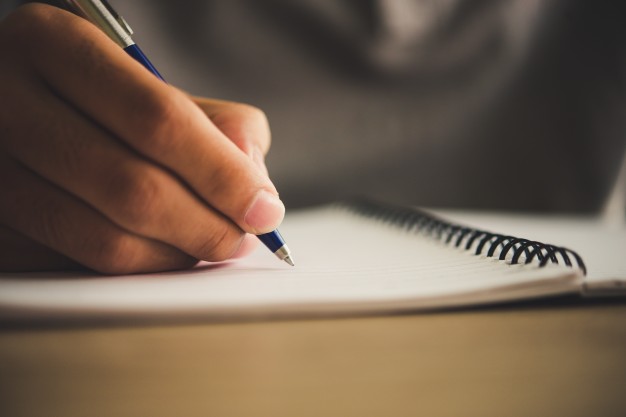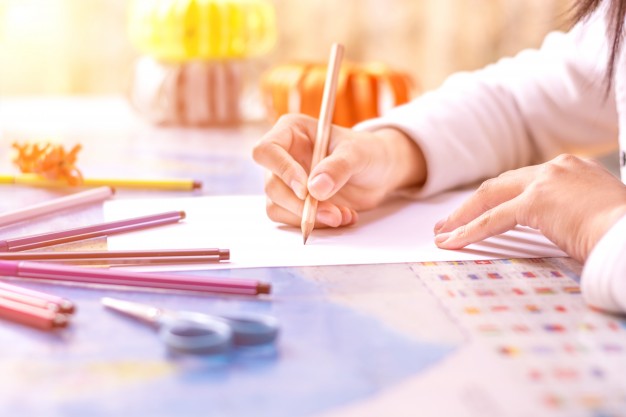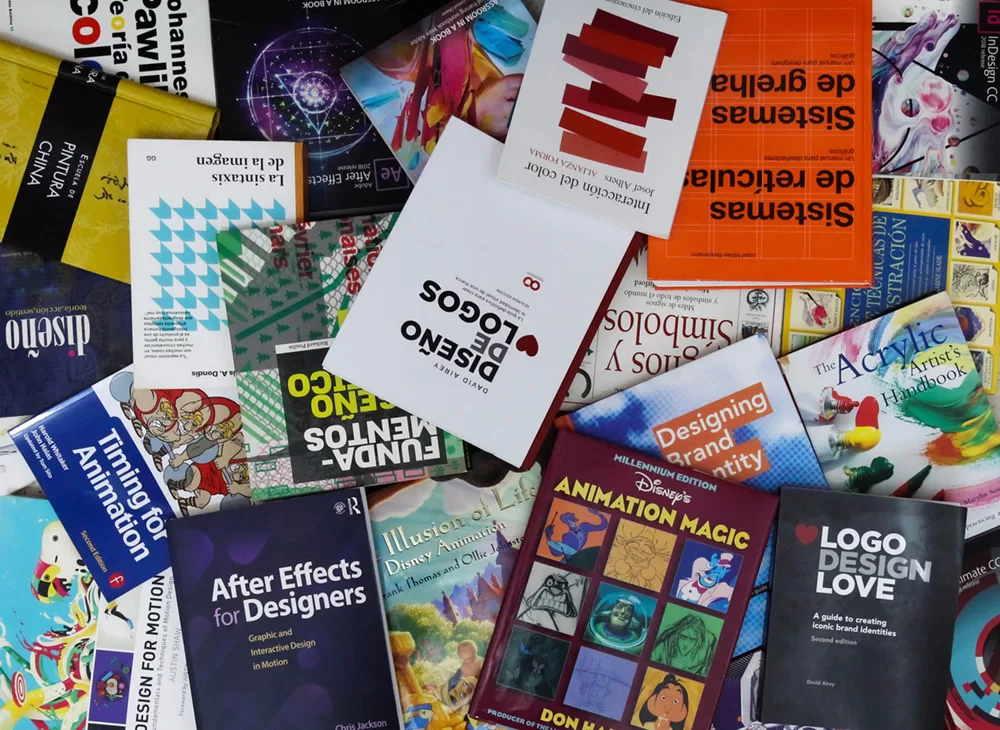Creative Process of Making Comics
Last Updated on July 1, 2024 by Ilka Perea Hernández
The creative process of making comics involves very specific steps that, if done in order, with dedication, and with creativity, can result in a unique, interesting, and eye-catching product.
Comics have not lost their popularity. Even the new DC and Marvel productions have retained old readers and gained new fans for this artistic medium. Novelists and graphic artists have found a space to express themselves and tell fascinating and entertaining stories.
Many graphic designers, illustrators, novelists, and writers learn about the concepts and features of the comic to understand it and thus use it as a mass medium to spread their ideas or stories.
Whether it is a graphic novel, a comic book, or comic strips to be published on Instagram or Tumblr, the process of making comics is the same. If the project is a comic strip, it is usually the work of a single graphic designer. Instead, larger projects will require a work team with extremely specific tasks.
Table of Contents
- Roles in Process of Making Comics
- Who is on the team?
- Producer
- Writer
- Director
- Cartoonist or Comic Artist
- Inker
- Colorist
- Letterer
- The Steps of Making Comics
- Once upon a time… a great idea!
- Write a script
- Set design and style
- Draw cartoon
- Inking and Coloring
- Place the text
- Some Insights
- What’s Next? — Publish Your Comic!
- Any Thoughts?
- Cite this post
Roles in Process of Making Comics

Who is on the team?
As a rule, comics will be big projects that will require the support of several people who play separate roles:
Producer
The producer would be the editor, the writer, or the group of people who have collaborated on the general story. He’s the overall leader of the team. The person who makes sure everyone is working well together.
Writer
The writer is the person responsible for creating the story. They are skilled and responsible for the general structure of the story, the dialogue, the general rhythms of the story, and the framework of the story. They are great thinkers.
Director
The director is the cartoonist (or artist) who brings the comic to life. This role is responsible for the visual narration, how people move from one cartoon to another, the general camera angles, setting the pace of the story through the panels, and how the reader even reads the story.
Cartoonist or Comic Artist
They oversee drawing pictures to convey ideas. A cartoonist is a visual artist who specializes in drawing cartoons (individual images) or comics (sequential images). The artists must not only master drawing techniques to perfection. Besides, they must have a good sense of humor, know the events happening around them, fully understand the characters of the cartoon as well as the surrounding environment, and put on paper the ideas proposed by the team or director. They are also known as comic strip creators, comic book artists, graphic novel artists, or comic book illustrators.
Inker
A good inker can influence the lighting better and more skillfully than a cartoonist or comic artist. They can put their ideas on paper or, in some cases, leave them entirely to the inking unit. Some cartoonists ink their own work. But it is vital that any ink on the page sets the mood with light and shadow and, most importantly, ensures that the artwork has depth and clarity.
Colorist
A colorist is responsible for many of the major roles in comic book creation today. Along with the inker, they are responsible for the lighting. Color also involves depth, mood, tone, and emotion. Comics can easily be made in black and white and be the best artwork without color. But once the color is introduced, that is when a comic really becomes something different.
Letterer
In comics, it is as important as any other job. This role contributes to the impact of the comic. The letters make reading possible. It also helps to draw attention and is an integral part of the story. This person must master the terms and usage of typefaces, calligraphy, letter size, and layout. In this sense, letterers must know several types of speech balloons, as well as onomatopoeias, to be able to draw in sound effects.
The Steps of Making Comics
The creation of a comic involves several steps. Many of these steps are assigned to different people. So, it is easy to deduce that the cartoon is work that is often done by a team. In other cases, a single graphic designer can lead a small project, such as a comic strip for advertising.
Whatever the case, below are the steps in the process of making comics.
Once upon a time… a great idea!
All things start with an idea. Comics are no exception. It starts by taking small notes of loose ideas and then spinning them together to create a complete story. The idea does not need to have all the details. Sometimes ideas come up during the writing process. But to fill the spaces with details, you must first have the basic structure of every story: a beginning, a middle, and an end.

Writing in a notebook helps one organize and remind one of ideas. Source: Freepik.com
The main character is created first. Begin by describing your physical characteristics and personality. Think about history, background, and a life’s past. Then you can load it with more details, such as their personal relationships, their age, their clothing, and the environment in which they develop.
Then the secondary characters are created. The creation process is like that of the main character. The more richly detailed the characters are, the more interesting the story will be, and the more readers will identify with the protagonists.
In this stage, the genres of the comic are also defined, as are the physical laws that govern the unique environment of the characters, the goals, and challenges of the protagonist, and how the other characters influence the course of the story.
Write a script
One of the most common mistakes is to start drawing the comics before making the story. While you might want to grab a blank sheet of paper, or start with your favorite drawing app, and just dive in, doing so is likely to end up wasting a lot of time.
Taking time to write a script is essential. You do not need to be sophisticated, and you do not need an expensive app to do it. A plain text editor will do.
When it is time to write the script, there are four main points to keep in mind:
- Define the number of panels.
- Establish the types of shots and angles on the panels.
- Visualize how panels will look graphically.
- Write the text for dialogues, subtitles, and onomatopoeia.

Get a Scriptwriting Sample
It is a tool that will help you organize ideas and visualize them more easily.
Set design and style
The graphic and linguistic styles of the comic are defined. The tone of voice, the onomatopoeias, the color palette, and even the type of stroke and linear value of the illustration. Special attention should be paid to the visual language, images, and symbols that will be used in the illustrations and the text (typographic use) to correctly express the ideas previously defined in the script.
Also, it is recommended to use thumbnails, such as a sketch, which are like storyboards. They help solve any composition problems before spending time in the process of inking and coloring the pictures. At this point, the spaces for the text (dialogues and onomatopoeias) are also considered.
Draw cartoon
At this step, the magic begins… the funniest part! It is usually a slow process, but the sketches and thumbnails in the previous stage prevented any waste of time.

The technique of drawing, whether digital or traditional, will also influence the time of the process. At this stage, all the details are taken care of, although it does not have to look perfect. The final changes will be made during the inking process.
If the drawing is freehand, it is recommended to respect the final format, that is, it should be drawn at the same scale at which it will be printed or presented. It is recommended to use rulers or squares for the frame of panels, a mechanical pencil, or one with a good tip. For speech bubbles, there are molds to create geometric shapes that will serve to draw with precision.
If the process is digital, the drafter or graphic artist can use the tools available on the market. Adobe Illustrator is the quintessential vector drawing program and sets the trend in this market. Another option with a more reasonable cost is Affinity Designer, which provides its users with a friendly interface and powerful and varied tools for this purpose. For those who do not have a big budget, Inkscape is free.
Inking and Coloring
During inking, the drawing is cleaned with defined strokes. Clarity and depth were added to the illustration. Then it is colored with the previously chosen color palette. A well-defined and proven color palette will ensure a more eye-catching finish with sufficient contrast and well-marked accents. If the colors are not chosen well, it can spoil the reader’s experience.
Traditionally, inking and coloring are considered two separate processes for making comics. Inclusive; each different person makes one. But with technological advances and software development, both perform tasks, even though the order may vary: first color, and then ink.
Place the text
One task that is often overlooked in the process of making comics is the placement of text. You may have a remarkable story and fantastic illustrations. But if the text is not readable, nobody will read the comic.
It is important to take care of the size of the text — neither too large nor too small. You must correctly select the type of speech bubble to be used in the panels because each one has a function and connotation.
Colors can also affect the readability of text. Others change the color of the speech bubble to represent a connotation or to emphasize a state of mind, and the text is placed in another color. This combination should ensure sufficient contrast and not strain the readers’ eyes.
Often, the orientation of the writing of onomatopoeias is tilted or twisted to accent a context. But writing on speech bubbles tends to be in a completely horizontal orientation for light reading. If the reader is not comfortable with reading, the story will lose that reader and others.
Some Insights
In general, the process of making comics ends with the placement of the text. However, I would like to include the comic’s publication as the last step. I think that after so much effort in the creation of the comic and not publishing and distributing it, it does not make much sense. If the comic is of excellent quality, it should be shared.
What’s Next? — Publish Your Comic!
Publishing a comic is not an easy task, but it is possible. Although the costs of printing, storing, and distributing a graphic novel or comic book are an issue that requires planning and financing, there are other more viable alternatives.
During the digital age, many printed products are evolving into digital: newspapers, magazines, and books. Comics are no exception. Webcomics has come to supply that market of artists and graphic novelists who want to publish their works but do not want to get involved in the costs of production and printing of these works.
Artists and novelists turn to social media to advertise and market comics and spread their works and projects. They find social media readers eager for new and interesting stories.
Any Thoughts?
In the comments section, tell me if you have ever tried to make a comic book. What are the biggest challenges designers face in making their own comic book?
Cite this post
- APA Style:
Perea Hernandez, I. (2019, June 13). Creative process of making comics. Retrieved from https://ilkaperea.com/2019/06/13/creative-process-of-making-comics/ - Chicago Style:
Perea Hernandez, Ilka. 2019. “Creative Process of Making Comics.” June 13. https://ilkaperea.com/2019/06/13/creative-process-of-making-comics/. - MLA Style:
Perea Hernandez, Ilka. “Creative Process of Making Comics.” 13 June 2019. https://ilkaperea.com/2019/06/13/creative-process-of-making-comics/. Accessed [ insert current date]. - Harvard Style:
Perea Hernandez, I. (2019). Creative Process of Making Comics. Retrieved June 13, 2019, from https://ilkaperea.com/2019/06/13/creative-process-of-making-comics/ [Accessed ‘insert current date’].

Share
Spread the love… and this post!
If you liked it, share this post on your social networks. Smart designers share good things with others.

Bibliography
- Acevedo Fernández, J. (2019). Para hacer historietas. Instituto de Estudios Peruanos.
- Labarre, N. (2020). Understanding Genres in Comics (Palgrave Studies in Comics and Graphic Novels). Editorial Palgrave Pivot.
- McCloud, S. (2006). Making Comics: Storytelling Secrets of Comics, Manga and Graphic Novels. William Morrow Paperbacks.
- Stevenson, J. (2020). How to Draw Manga (Includes Anime, Manga and Chibi) Part 2 Drawing Manga Figures. Editorial Golden Valley Press.

